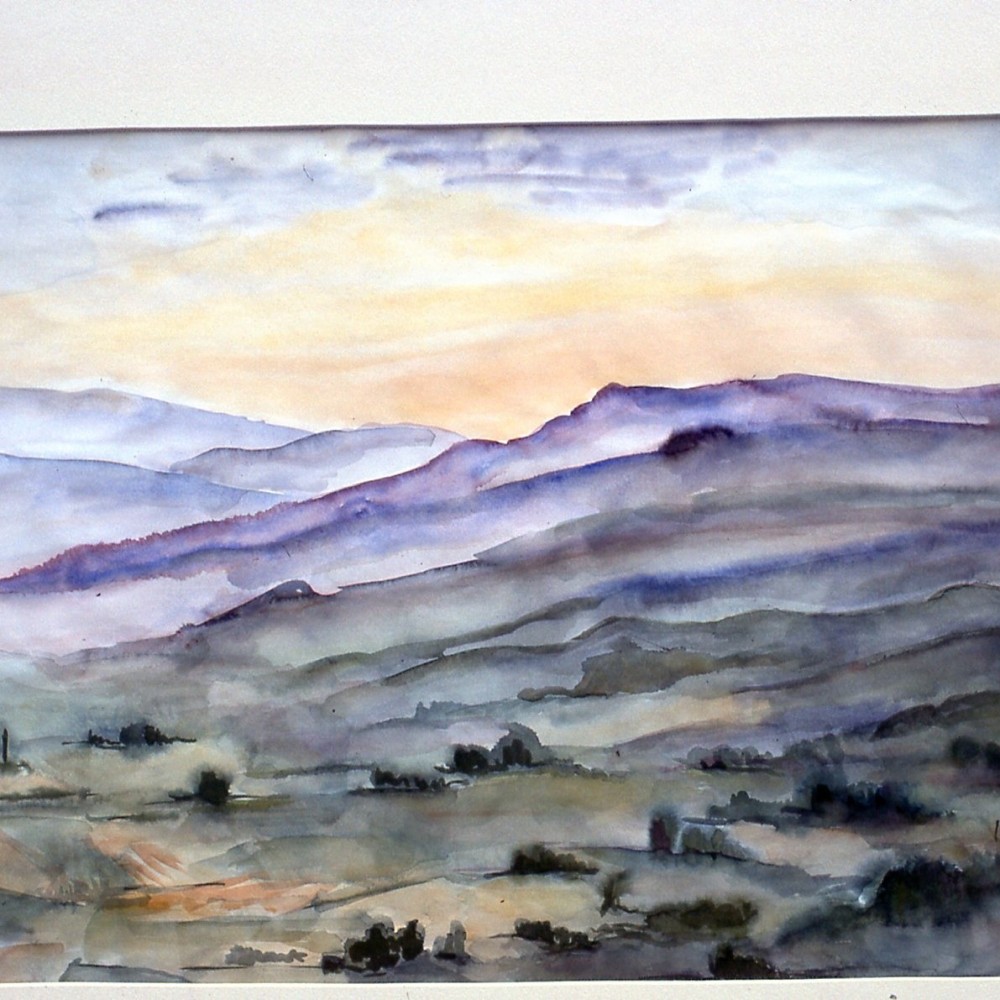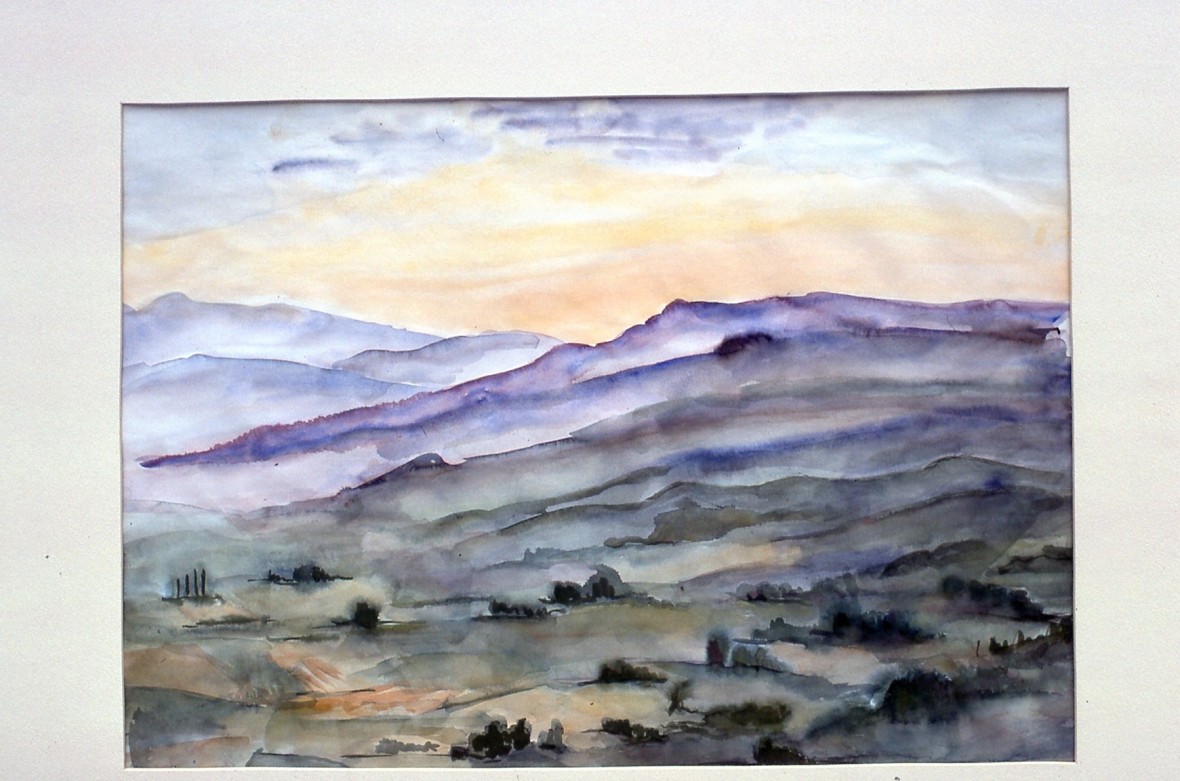The most extraordinary feature of Lacoste was actually external; from every standpoint in the village, a wonderful view of the valley was to be seen. Every hour, any weather, there was a display of nature and landscape that fascinated in calm of dawn or dusk as well as extremes of sun and mistral or stars, and centuries of human agricultural intervention in and with the landscape only enhanced the natural wild beauty.
Looking out over the landscape from Lacoste, one seemed to witness the entire repertoire of human stratagems of coexistence and survival with nature. Life seemed to follow the paths of least resistance, a general impression of the attitude of the locals, yet their lives were based on tacit acknowledgement of the necessity to meet all elements full-face, head-on -even the stone. When the ground under your feet is stone, you cull the soft stone on top and make walls to protect the shallow soil from the winds and you farm on it, and you cut into the hard stone and make your buildings, and you quarry it and sell it. All of it white, infinite shades of white making infinite colors of reflections and shadows, infinite colors and textures of patina and texture.

